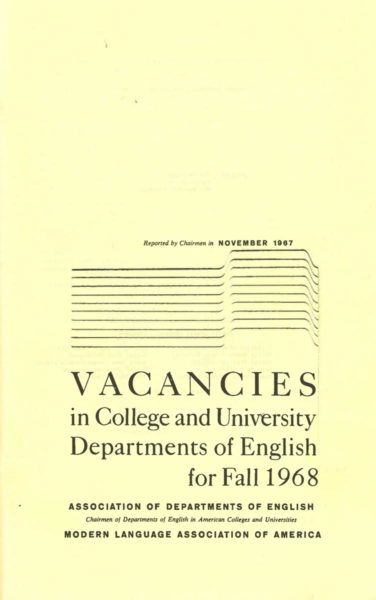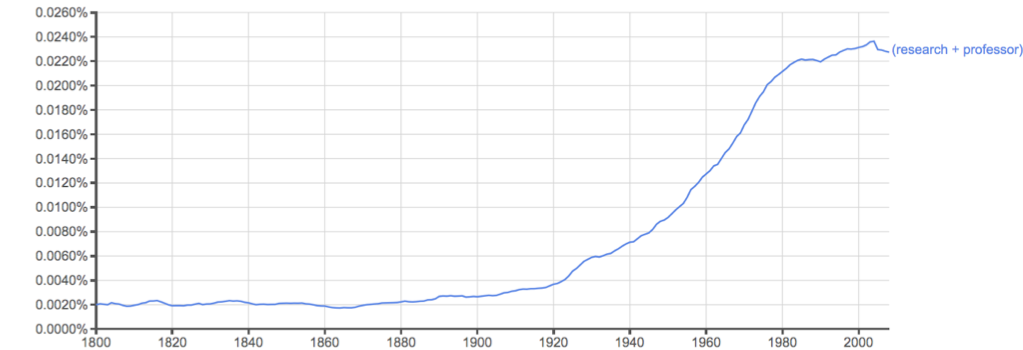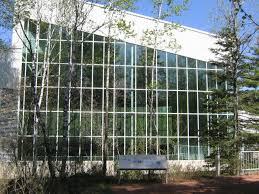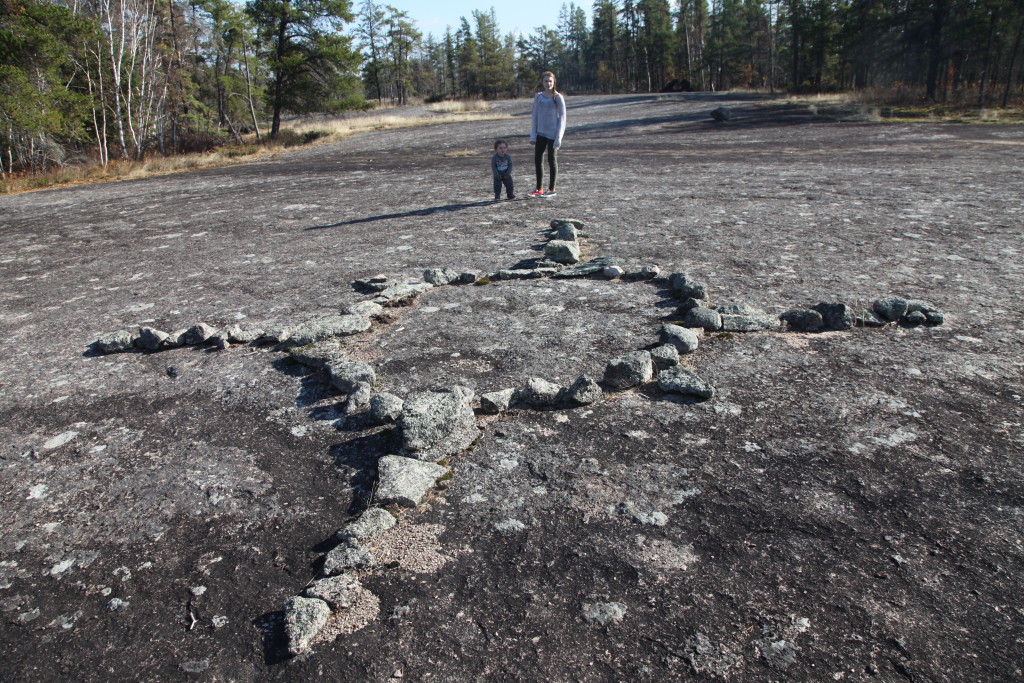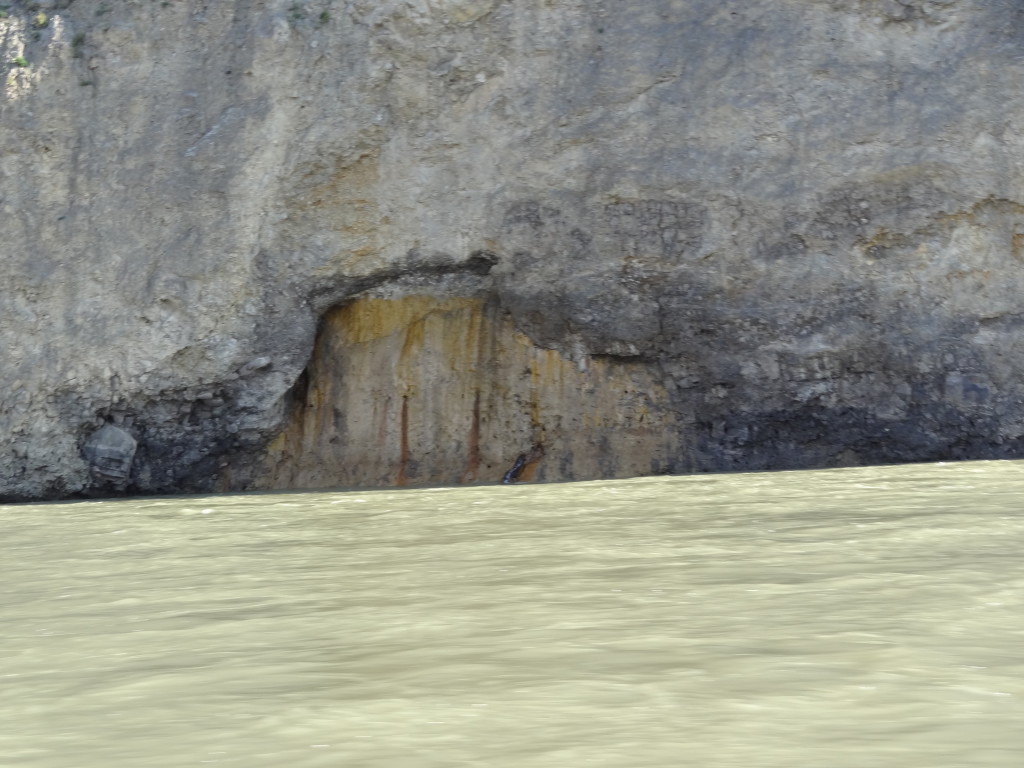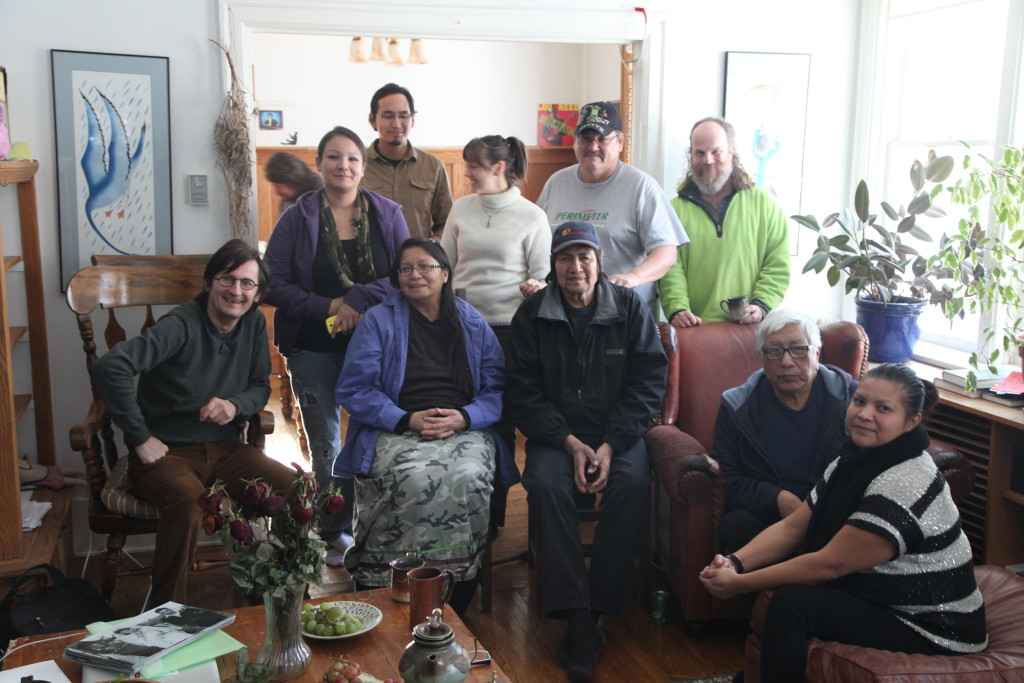I interned during the same summer that I was going through the application process at McKinsey. I was more covert about my professional goals and intentions within my department. But I was able to be open and honest with my colleagues at UCHRI, who supported me in those goals and wanted me to succeed. The supportive environment made a huge difference, as did the work I was doing each day in tracking the many career outcomes of PhDs. That work reaffirmed for me that I was on a plausible and valuable path [beyond the academy].
Robinson received strong mentoring and institutional support, both tangible and otherwise. And her work was of clear value to the needs and long-term goals of UCHRI.
Whereas the UCHRI program takes place during the summer, when doctoral students are often seeking employment, a new initiative at the University of Miami extends over the full academic year. The program, called Graduate Opportunities at Work (UGrow), offers opportunities for doctoral students to take nonteaching positions in campus units outside their departments. UGrow has thus found creative ways to cover costs for doctoral student tuition and stipends for professional development outside the traditional teaching assistantship or research assistantship model. Tim Watson, who established UGrow in August 2015 and in one year has nearly doubled (from six to eleven) the number of opportunities it offers, explains, “The financial side of things was a hurdle to overcome at first. Departments have to release students from their teaching responsibilities. The hosting unit has to agree to reimburse the student’s department, and the department can then use those funds either to replace that teaching assignment or for other purposes.” The value to the hiring departments has become quite clear, he reported, as the doctoral students have already made high-level contributions in their new roles and have all worked semi-autonomously after an initial period of training.
Watson has placed doctoral students in campus units from the University Libraries—which, he notes, have been a key partner in establishing the program—to Advancement.2 Brad Rittenhouse, a PhD candidate in English with an undergraduate background in computer science, is a UGrow Fellow in the Center for Computational Science at Miami, where he works on digital humanities projects related to his dissertation research. “Over the course of the year, I have gotten a lot of great experience in the coding language R—in the quantitative branch of DH, in other words,” he says. “I focus on how you read texts with computers, and what kind of reading this allows you to do.” Rittenhouse notes that professional development opportunities for doctoral students can be equally engaging whether they resonate with their dissertation research or open an entirely new line of professional inquiry.
We hope and expect that this trend of internships for doctoral students will continue. At the College of the Liberal Arts at Penn State University, the Graduate Internship Program (GRIP) is designed to connect graduate students in the liberal arts with university units that can gain most from their skills and expertise. Students are hired for one or two semesters of twenty hours of work per week; costs for tuition and stipends are shared between sending and hiring departments. One of the key strategic requirements of the program—one that costs nothing in financial terms—is that the internship must be endorsed by the student’s dissertation adviser. This is all-important because, as the MLA report underscores, many faculty members continue to believe that success is only achieved if those with doctorates aspire to and are offered tenure-track positions at well-known institutions of higher education.
Finally, at Arizona State University there is the Humanities Doctoral Internship Program, a part of the Connected Academics initiative. Shannon Lujan, a PhD candidate in English and a Connected Academics Research Fellow at ASU, explains that the program is establishing a variety of opportunities for doctoral students, including an “Administrative Program Operations internship, where students will assist and learn from deans, department chairs, and program directors.” This internship will be designed specifically to “prepare students for a variety of careers,” she says. All these new programs offering internships are broadening what counts as success for doctoral students in the humanities.
At the same time, programs are being created that expand the traditional meaning of the term fellowship to include forms of professional development beyond research support. The term confers prestige on its recipients; to be given a fellowship is often to have been competitively selected to undertake what is viewed by a committee as important and difficult work. Within the academy, and within the higher education sector more broadly, a fellowship is considered a mark of distinction. But beyond the borders of a research university, the term internship seems to resonate more strongly. We thus understand the use of the term internship in the programs mentioned above to be a strategic choice, connecting doctoral students with wider audiences across sectors. Similarly the use of fellowship—in its expanded form as practice-based work—is itself a strategic choice.
“Give Us a Voice in Our Own Future,” the title of an August 2015 essay in the Chronicle of Higher Education by James Van Wyck and Joseph Vukov, captures the ethos of emerging practice-based fellowships. Van Wyck and Vukov are the first doctoral students in the Fellowship in Higher Education Leadership program at Fordham University. The fellowship offers graduate students a two-year experience working alongside senior administrators at the university. The key term is alongside. Fellows in the program are tasked with high-level program and curriculum development; “the hallmark of this fellowship,” they write, “is the voice and responsibility it gives to graduate students.” One project they are working on is Public Scholarship for the Common Good, which they describe as a service-learning program.
A new program at the Simpson Center for the Humanities at the University of Washington, funded by the Andrew W. Mellon Foundation, Reimagining the Humanities PhD and Reaching New Publics, is similar in the level of autonomy it offers its fellows. Each year six doctoral students from departments across the humanities and humanistic social sciences at the university are paired with faculty mentors in their disciplines at community colleges in the Seattle district.3 Both fellows and mentors are compensated; time spent on the fellowship—thirty hours per quarter—is additional to the teaching-assistant appointments the doctoral students hold in their home departments at the university.4 The faculty advisers of the University of Washington doctoral students also receive a modest research budget as one way of pulling them into the orbit of the program.
In working on this program together over the past year, we have been elated to see these pairings of two-year college faculty members with doctoral students grow into inspiring collaborations, the outcomes of which we could not have possibly foreseen. The fellows and their faculty mentors have worked on exciting new projects, such as the course Philosophy for Children, to be added to the two-year college schedule in coming years, and a coauthored academic paper on economic precarity and transfer students. Fellows have told us that the freedom of project design is a core strength of the partnership. They have stated, in no uncertain terms, that their experiences in the program have literally changed the meaning of their work in graduate school. They also insist that they would not want to be called interns.
Three of our six 2015–16 fellows were from disciplines represented by the MLA (the others were from philosophy, history, and communication). AJ Burgin, in English, helped develop and launch the two-credit course College Applications and Personal Statements, designed by Kennan Knudson, a faculty member in English and Burgin’s mentor at North Seattle College. Central to the course is the mastery of what are to many of the students the altogether mysterious genres of the college application and personal statement. The students begin by researching transfer and admission requirements and then revise rough drafts of their application materials in an instructor-led, peer-review workshop. At Seattle Central College, Lise Lalonde focused with her mentor, Laurie Kempen, on integrated courses and assignments in French. Kempen, who holds a doctorate in French from the University of Washington, is an experienced advocate for foreign language learning as a critical area of funding by our state legislature, and Lalonde took up this cause as a secondary area of interest, looking into the ways in which such programs, at both the two-year college and the university, are perceived by lawmakers. And Angela Durán Real, in conversation with national reporting on the intense disparity in access and participation in study abroad among working-class and minority college students (see, e.g., Lu), started a project with her mentor, Asha Tran, at South Seattle College to encourage students to pursue their study of Spanish language and culture internationally.
In the fall and spring each year, we bring fellows and mentors together for discussion-based workshops. These events give momentum to collaborations at the beginning of the academic year and space for reflection at its close. Also joining the conversation are deans from our partner institutions and guest speakers whose work distinguishes them as national leaders in the humanities and in two-year colleges. Last year we welcomed Anne McGrail, professor of English and recipient of a National Endowment for the Humanities grant for her program Doing DH at the CC, at Lane Community College in Eugene, Oregon, and Lauren Onkey, chair and dean for humanities at the Jack, Joseph, and Morton Mandel Humanities Center at Cuyahoga Community College in Cleveland, Ohio. Both speakers energized the room with their remarks on the transformative work of two-year colleges. And in their end-of-year presentations, fellows and mentors shared their thoughts on how doctoral programs in the humanities could learn from that work. “This program, to me, is about dispelling myths and blurring boundaries,” Tran noted. She was met with wide agreement. The fellows told us that, over the course of the year, they came to view the two-year college with a deepened, more nuanced perspective. Burgin described the distance between the University of Washington and the North Seattle College campus as becoming ever smaller in her mind; now, “there is institutional proximity and possibility,” she said. This program, and others like it, seek to expand on such possibilities for the benefit of students across our educational system.
Internship and fellowship models range in the depth of their connection to the higher education sector; some programs aim to prepare students to go into business, nonprofit institutions, and government, while others explicitly focus on the future of universities and colleges. Many programs seek to bridge the two, partnering with on-campus units to provide students with experiences that would be useful within and transfer beyond higher education. For programs such as Reimagining the Humanities PhD and Reaching New Publics and the CUNY Humanities Teaching and Learning Alliance, a partnership between the City University of New York’s Graduate Center and LaGuardia Community College, there is a strong emphasis on preparing doctoral students to participate in and contribute to a changing landscape of higher education, one in which inclusion and diversity are of major and increasing concern. The Mellon Fellowships at the University of Washington are designed to give our doctoral students a full sense of how higher education is serving people in the United States—or not (Mettler). Inside Higher Ed reports that the Bill and Melinda Gates Foundation has increased its focus on gathering data on postsecondary education, specifically related to students for whom the two-year college is a crucial point of entry:
The impetus for the data push is gaps in knowledge about “posttraditional” students, . . . including low-income, first-generation and adult students.
“Higher education is reproducing privilege in this country,” said Dan Greenstein, the director of education and postsecondary success in the foundation’s U.S. program. “It’s unsustainable.” (Fain)
To counter this alarming trend, yes, we certainly agree that we do need to gather further information; the efforts of the foundation are commendable. But in addition we need to create structures of professional development that will enable doctoral students to position themselves effectively on the side of social mobility, especially if they choose to pursue careers in higher education.
The terms internship and fellowship are not strictly different in meaning, but we think that a small distinction may be useful for people who are considering creating such programs for doctoral students. Informing our thinking is our fellows’ insistence that the two terms imply radically different levels of expertise. When we asked the fellows if we should rename their fellowship an internship in subsequent years of the program, they immediately said, “No!” We suggest the following as a working definition of the term internship: internships meet the preexisting needs of an organization while expanding the experience base of the intern in a meaningful way. Internships should be highly directive, with specific and measurable outcomes determined in advance by the hiring organization. It is the responsibility of the mentor to find and create projects that will leverage and expand the doctoral student’s skills and to balance this work against the needs and goals of the organization. The humanities centers, university departments and offices, and external partners who hire doctoral interns will have a sense of the most valuable contributions these doctoral students can make in these settings. This may include the picking up and developing of backlogged projects, the improvement of processes, and the updating of documentation. This is the sort of work that sustains institutions. It is also fundamental to a professional skill set in a knowledge economy, as are the answers to such questions as, How do you draft a budget? respond to the concerns of multiple constituencies? plan and promote an event? conduct a meeting or an interview?
Fellowship, by contrast, could be defined thus: practice-based fellowships create space for breaking new ground and, as a result, yield outcomes that cannot be directed or anticipated. We might conceptualize the difference between an internship and a fellowship as one between the work of sustaining and strengthening organizations, on the one hand, and the work of reimagining and reconstructing organizations, on the other. These kinds of work do require, to our minds, different levels of expertise. But to be clear: both internships and fellowships are needed. Ideally, students would be able to do both. Because they serve different purposes—one focusing on the development of core competencies and responsiveness to the needs of an organization, the other applying those competencies and sensibilities to the creating of new projects and perhaps even to the building of new structures—they complement each other. They are two different forms of professional development. Doctoral students who pursue internships, fellowships, or a combination of the two will be better prepared to take on positions of leadership in higher education—and elsewhere.
On the basis of our work at the University of Washington and our discussions with UCHRI and the University of Miami, we make the following recommendations:
Strong mentoring. Internships and fellowships allow doctoral students to build relationships with mentors who are not their faculty adviser or members of their dissertation committee. Mentors, because they play a key role in guiding doctoral students and connecting them to larger networks, are indispensable to emerging forms of professional development for PhDs.
Project-based work. Well-designed projects develop core competencies that translate across a variety of professional opportunities. Doctoral student interns and fellows, and their mentors, should track the specific capacities that their various projects foster.
Deliverables. Doctoral students should emerge from graduate internships and fellowships with the ability to narrate their skill development in terms of measurable accomplishments. Whether these concrete outcomes are directed by the hiring organization or developed through collaboration, they will provide an archive from which talking points for interviews with potential employers and partners can be drawn.
The reconceptualization of doctoral education in the humanities is well under way, in national discussions and, more important, in practice. We are convinced that these initiatives will help prepare the next generation of PhDs to be leaders in and on behalf of their fields of study. We also believe that the programs noted here, and others like them, will serve as leading models for change.
Notes
- Connected Academics, funded by the Andrew W. Mellon Foundation, supports “initiatives aimed at demonstrating how doctoral education can develop students’ capacities to bring the expertise they acquire in advanced humanistic study to a wide range of fulfilling, secure, and well-compensated professional situations” (“About Connected Academics”). The three partner institutions selected by the MLA for the initiative are the University of California Humanities Research Institute, Arizona State University, and Georgetown University.↩
- The program continues to evolve. In the 2016–17 academic year, “UGrow has successfully expanded to offer an off-campus placement at HistoryMiami Museum,” Watson reports.↩
- Two similar programs are under way. The first is the CUNY Humanities Teaching and Learning Alliance, a collaboration between the City University of New York’s Graduate Center and LaGuardia Community College, supported by a grant from the Andrew W. Mellon Foundation. It welcomed its inaugural cohort of nine Graduate Center students in fall 2016. The second is an emerging partnership between Brookdale Community College and Princeton University led by Matthew Reed, vice president for learning at Brookdale Community College.↩
- All the internships and fellowships we outline here are paid opportunities.↩
Works Cited
“About Connected Academics.” Connected Academics, MLA, connect.commons.mla.org/about-connected-academics/.
Burgin, AJ. Interview. By Rachel Arteaga. 3 June 2016.
Brown, Kelly Anne. Interview. By Rachel Arteaga. 30 Mar. 2016.
———. “Making a Case for Humanities Internships.” Humanists@Work, U of California Humanities Research Institute, 7 Nov. 2014, humwork.uchri.org/blog/2014/11/making-a-case-for-paid-humanities-internships/.
Fain, Paul. “Gates Foundation Sharpens Its Data Push.” Inside Higher Ed, 3 Feb. 2016, www.insidehighered.com/quicktakes/2016/02/03/gates-foundation-sharpens-its-data-push?utm_source=Inside+Higher+Ed&utm_campaign=2a29ad0a73-DNU20160203&utm_medium=email&utm_term=0_1fcbc04421-2a29ad0a73-197483685.
Lu, Charles. “Putting Color onto the White Canvas.” Inside Higher Ed, 23 Feb. 2016, www.insidehighered.com/views/2016/02/23/expanding-opportunities-minority-students-study-abroad-essay.
Lujan, Shannon. Interview. By Rachel Arteaga. 7 Apr. 2016.
Mettler, Suzanne. Degrees of Inequality: How the Politics of Higher Education Sabotaged the American Dream. Basic Books, 2014.
Report of the MLA Task Force on Doctoral Study in Modern Language and Literature. Modern Language Association, May 2014, www.mla.org/doctoral-study-2014/.
Rittenhouse, Brad. Interview. By Rachel Arteaga. 23 Mar. 2016.
Robinson, Nicole. Interview. By Rachel Arteaga. 31 Mar. 2016.
Tran, Asha. Interview. By Rachel Arteaga. 3 June 2016.
Van Wyck, James M., and Joseph M. Vukov. “Give Us a Voice in Our Own Future.” The Chronicle of Higher Education, 26 Aug. 2015, www.chronicle.com/article/Give-Us-a-Voice-in-Our-Own/232627.
Watson, Tim. Interview. By Rachel Arteaga. 23 Mar. 2016.
Posted May 2017

